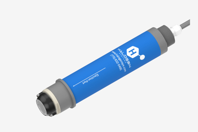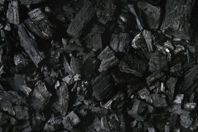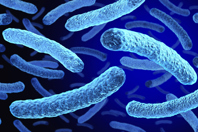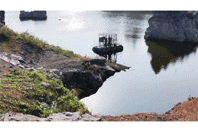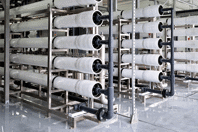DRINKING WATER DISINFECTION RESOURCES
-
Developed from U.S. Office of Naval Research requirements, this multiparameter chlorine sensor offers extended maintenance-free operation, flow-independence, and automatic compensation for reliable, in-pipe monitoring.
-
In this Q&A, Dr. Elke Süss of Metrohm addresses the urgent need for haloacetic acid testing in response to “one of the most significant updates to EU drinking water monitoring in recent years.”
-
Thermal reactivation of granular activated carbon is a proven and scalable method to achieve >99.9% destruction removal efficiency for PFAS. This process fully restores the carbon for reuse, providing a sustainable solution that breaks the cycle of "forever chemicals."
-
Ion exchange resin is a reliable, high-capacity solution for municipal PFAS treatment, demonstrating zero detectable PFAS after processing 82 million gallons of water. The technology offers a significantly smaller footprint and superior volumetric capacity compared to GAC. Read the full case study to review performance data and strategic impacts.
-
Implementing and managing a Legionella control regime can sometimes seem daunting and complex. Invariably, a lot of resources, time, and effort are needed to achieve the required standard and provide assurance to senior management and auditors that controls are effective and those that are not are being managed and rectified appropriately.
-
The Chennai Metropolitan Water Supply and Sewerage Board (CMWSSB) encountered significant challenges in treating high algae loads at its drinking water plant, which processes 1.5 million liters of water daily. The primary issue arose from the organic load in lake water, which, when treated with conventional chlorine disinfectants, resulted in harmful disinfection byproducts (DBPs).
-
The Big Sky district in Montana, spanning 228 square miles and serving approximately 2,600 customers, has been grappling with the challenge of increasing summer water demand for irrigation.
-
Atlantium HOD UV systems provide effective RO membrane protection by combining ultraviolet water disinfection technology with hydraulic and optic principles.
-
Recognizing the urgent need to ensure safe drinking water, the Queenstown Lakes District Council in New Zealand partnered with FILTEC to implement advanced UV water treatment solutions across key plants.
-
In August 2018, Aqueous Vets was selected over existing industry incumbents to supply the Granular Activated Carbon Systems (GACS) for a Southern California Water Treatment Plant.

